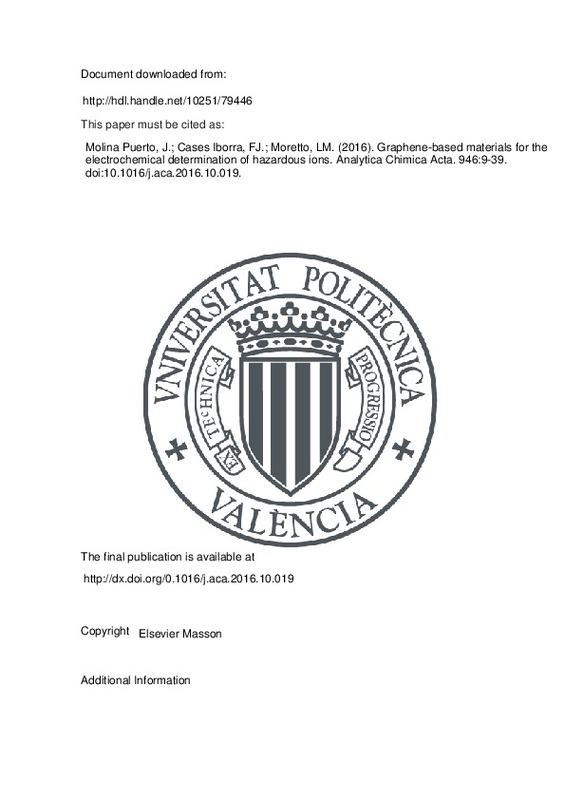JavaScript is disabled for your browser. Some features of this site may not work without it.
Buscar en RiuNet
Listar
Mi cuenta
Estadísticas
Ayuda RiuNet
Admin. UPV
Graphene-based materials for the electrochemical determination of hazardous ions
Mostrar el registro completo del ítem
Molina Puerto, J.; Cases Iborra, FJ.; Moretto, LM. (2016). Graphene-based materials for the electrochemical determination of hazardous ions. Analytica Chimica Acta. 946:9-39. https://doi.org/10.1016/j.aca.2016.10.019
Por favor, use este identificador para citar o enlazar este ítem: http://hdl.handle.net/10251/79446
Ficheros en el ítem
Metadatos del ítem
| Título: | Graphene-based materials for the electrochemical determination of hazardous ions | |
| Autor: | Moretto, L. M. | |
| Entidad UPV: |
|
|
| Fecha difusión: |
|
|
| Resumen: |
[EN] The use of graphene in the field of electrochemical sensors is increasing due to two main properties that make graphene and derivatives appealing for this purpose: their conductivity and high surface area. In addition, ...[+]
|
|
| Palabras clave: |
|
|
| Derechos de uso: | Reserva de todos los derechos | |
| Fuente: |
|
|
| DOI: |
|
|
| Editorial: |
|
|
| Versión del editor: | http://dx.doi.org/0.1016/j.aca.2016.10.019 | |
| Código del Proyecto: |
|
|
| Agradecimientos: |
J. Molina and F. Cases wish to thank to the Spanish Ministerio de Ciencia e Innovacion (contract MAT2016-77742-C2-1-P) for the financial support. J. Molina is grateful to the Conselleria d'Educacio, Formacio i Ocupacio ...[+]
|
|
| Tipo: |
|







![[Cerrado]](/themes/UPV/images/candado.png)


